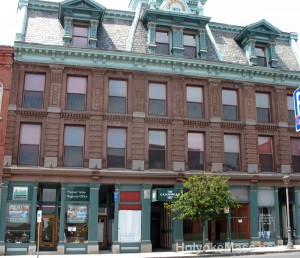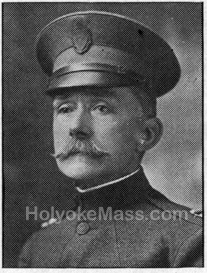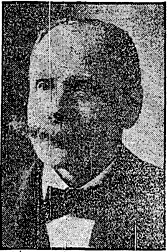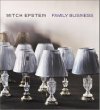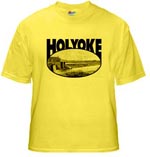by Laurel | November 2nd, 2011
50th Anniversary Of Organization Will Be Celebrated — History And
Growth Of Organization.
Holyoke, Nov. 2, 1929 — The Holyoke Caledonian Benefit Club, inc., which has been the mecca of the Scottish population almost since the inception of the city, will celebrate, its golden jubilee anniversary Saturday evening the 23d. The anniversary will be observed with a banquet in the Hotel Nonotuck, at which there will be a speaker of national prominence.
A pleasing feature of the observance will be the presence, of three of the charter members. They are Thomas Rae, son, of’ Thomas Rae, Sr., the initiator of tile movement for, and one of the founders of the club; Robert Law, and James Robertson.
A club for local Scotsmen was first planned in 1879, though a few -of the local residents of Scottish birth used to meet every Saturday night since 1875 for the exchange of their scotch witticisms. There was no formal organization, however, for this first group, and no clubhouse.
Late in 1879, a representative of the Orders of Scottish, Clans came here to form a clan. The meeting was held in the Holyoke House (Hotel Hamilton) and the solicitor was well received, but the group did not favor the assessment System of the organization, and the project, was not started.
A short time later, Thomas Rae, Sr., suggested that the Scottish residents form a Caledonian club. He then had some handbills printed, calling a meeting of Scotsmen for November 22. The club was formed that night with the following officers: Thomas Chambers, president; James Skinner, secretary; Thomas Rae, Sr., treasurer. There was an original membership of 21.
Among the original members and those who took an active part in the early activities of the club were: Thomas Chalmers, William Reardon, Robert Allen, James Crawford, James M. Clark, James and Edward Finley, Arch and John Jack, and John Leisehman, James Phillips, James Skinner, James Wallace, James Robertson, Thomas Rae, Sr., Thomas Rae, J., Robert Buchanan and his sons, James and Andrew; Thomas Anderson, Alex Ballintyne, John Chalmers, James Jolly, John Hyslop, Robert Wallace, Robert Law and Duncan Keller. The last-named member was the first of the new club to pass away. July, 30. 1880.
The first meetings of the club were held in what was known as Grand Army hall in the Parsons block, at Race and Dwight streets. From the original list of 21, as a nucleus, the membership steadily; increased until there was a roster of 225 members at the time of the 25th anniversary in the fall of 1904. This number has since doubled,the golden jubilee membership being given as 450 members.
Objects of Organizers
The primary purpose of the organizers was to create a permanent fund for the benefit of their fellow-countrymen in the time of sickness or distress; also for the cultivation and promotion of Scottish literature, poetry and song. The first object has been fully. attained, the benefit fund having been built up by a fixed monthly payment by the members, as a. provision for themselves in case of sickness or death.
Through the profits realized from excursions, socials, and other entertainments, the Caledonians have accumulated a separate fund from which they have assisted- their fellow-countrymen and their families who are not classed as members. The club has also contributed generously to various outside institutions, including the City hospital,- the day nursery, the library, the Wallace monument at Sterling, and the Scotsmen’s fund for the widows and orphans of Scottish soldiers who died in the Boer war, and the World war.
One of the best-known of the activities through- which funds were raised for charity, was the famous “Hoot Mon” excursion which annually went from this city to the Boston beaches. While these excursions were far from the largest source of income, they provided an enjoyable outing; for the Caledonians and their friends.
In the early days—going back 30 years ago—the Caledonian club’s excursion every Fourth of July to the Southwick ponds (Congamond lake) was one of the big events of the year locally. The excursion, run over the Holyoke Westfield railroad; took most of Holyoke away for the holiday. Special trains were run, and every car was usually packed to capacity.
Holyoke took complete charge of the resort on that one day, and the whole family went along—father, mother and all the children. There were family picnic parties, baseball games, and other sporting events, boating and fishing. After the Southwick excursions were abandoned, there was a lull for a few years until the Boston excursion was started and this was, even more popular as it came during the August Shutdown in the mills and for a small Additional sum, excursionists could remain over in Boston for several days. With the war, however, excursions were abandoned by the railroad under the auspices of various organizations.
From a small beginning, the finances of the organization grew gradually until, shortly after the celebration of the silver jubilee anniversary, in 1904, the members began to consider the purchase of a home of their own. During the jubilee year, the group sought for and secured a charter of incorporation from the secretary of the commonwealth. Three years later, the club purchased, the old Crafts block at 189 High street, and the name was appropriately changed to the Caledonian building.
Presidents of Organizations
During the first quarter-century, the presidents of the organization were: Thomas Chalmers, two terms; William Reardon, Leishman, William, W. Borthwick James Auld, James Thomson, Jr., James Ross, John Hunter, two terms; George Barnett, Sr., two terms; John Brown, John, McMenigall, three terms; James Ross, two terms; John Aitken, Robert Brown, two terms; H. G. Brown, two terms, and Thomas M. Thomson, two terms.
Since the celebration of the 25th anniversary, the following men have served as president, the first serving two terms, and the seventh man serving three terms: William Black, James Clark, John Crowe, R. P. Porteous, John Tait, D. S. Aitchison, Donald Cameron, H. Campbell, Joseph Valentine, David Strachan; John Forbes, Daniel McDonald, Robert Clark, Andrew Dougherty, Sr., Allan Malcolm , and Frank Cuthill, present head of the society.
The position of treasurer has been filled successively by Thomas Rae, Sr., William W. Borthwick, Thomas Rae, Jr., William Hunter, Cornelius Hunter, Donald McDonald, John G. Brown, John Henderson and Alex MacFarlan.
For secretary, the club has had the following men: James Skinner, Thomas Duncan, James Auld. Fred Shearer, Alex, W. Paul, John Cameron, Charles W. Milnes, James Nicol, James Hamilton, Henry G. Brown, Thomas M. Thomson, William A. Robertson, John R. Gibb, William Black, David, Thomson, John McLeod, David Strachan, James Baird, Alex MacFarlan and Andrew Dougherty, Jr., is the present secretary.
With the society located in its own building in 1907, it was then established as one of the most substantial organizations in the city. The property has proved to be an excellent investment, attesting to the wisdom and foresight of the officers In going ahead at that time and obtaining a permanent home in the business section. The. Property, centrally located, is in almost constant use by various organizations In addition to the stores and offices.
The building was remodeled about 10 years ago; increasing the office space and improving the hall facilities. In addition to the Caledonian club, the ball is used by the Daughters of Caledonia, Holyoke Kiltie band, Clan McLaren and its auxiliary, Mount Holyoke lodge, Manchester Unity of Odd Fellows, the Swedish society, Building Trades council, and other social, fraternal and labor organizations.
During the World war, 76 members. out of a total enrolment of nearly 400, were in the service, the majority with the American forces, and seeing service overseas. An honor roll; inscribed with all the names of those who served in the war is hung in the lodge hall.
In conjunction with the progress of the organization in the year 1910, two members conceived the idea of the formation of a Kiltie band. Putting the idea into action, with the assistance of other members, they turned out in the Fourth of July parade of that year, the vanguard of what, was to prove in later years a famous organization. In the year 1911, July 4, 12 men appeared equipped in full Highland regalia. From then on their progress was rapid, and, August, 1916, saw them gain their first silver trophy in open contest at Worcester, defeating among others, Boston’s famous Kiltie band. Since then on, although handicapped by enlistments for the war, they have taken part in every contest of their class, and have met and defeated every band in Massachusetts and Connecticut, having won the Walter Scott, cup two consecutive years in New Haven and Bridgeport. They are now the proud possessors of 25 beautiful silver trophies and 15 medals, all first prizes, a record that will stand for the next generation to emulate
The Caledonian Robert Burns club was originally organized by past presidents of the Caledonian club. The Daughters of Caledonia, the auxiliary of the club, was organized 30 years ago, and has been remarkably successful.
Col Walter Scott of New York and Holyoke, is an honorary member of the club. Col Scott takes the keenest interest in the affairs of the club and has been a guest on several occasions. It bad been hoped to have him as an honored guest at the coming anniversary banquet, but previous engagements will prevent his attendance.
The arrangements for the golden birthday is in charge of a large committee that has been active for some weeks in completing the arrangements. The committee comprises Frank Cuthill, Allan Malcolm, William Black, Thomas M. Thomson, Daniel S. Aitchisom Donald Cameron, James Clark, William Robertson. Andrew Dougherty, Daniel McDonald, William Downie, Sr., Harry Campbell, James Auld, George Barnett, Sr., John Aitken, Robert. Brown, David Strachan and Alex McLeod.
Adapted from The Springfield Republican.
